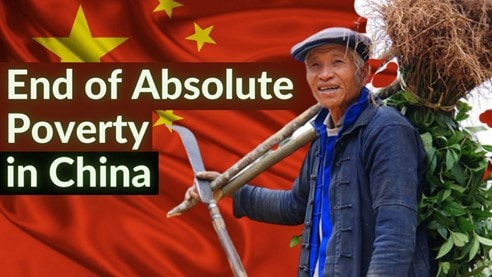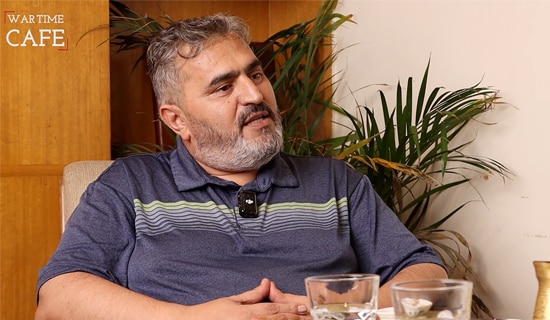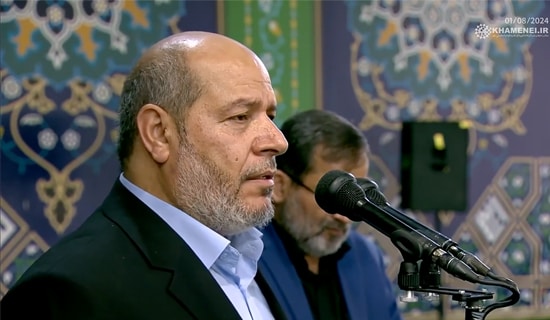On February 25, 2021, Chinese President Xi Jinping announced that China had secured a "complete victory" in its fight against poverty. With absolute poverty eliminated, he added, China has created another "miracle" that will "go down in history."[1]
The following day, February 26, the pro-Kremlin Russian media outlet Vz.ru published an article analyzing the "Chinese method" of overcoming poverty, titled "Is China's Way Of Fighting Poverty Suitable For Russia?" and discussing whether Russia should adopt the same approach.
According to Vz.ru, there are two elements about China's success story that are worth noting. First, China has eradicated absolute poverty, not poverty as such. Secondly, the poverty line in China is considered to be 6.33 yuan (around $USD 0.97) per person per day, whereas the UN poverty line is twice as high – $USD 1.90 per day. The analysis underlined that had China adopted a definition of poverty based on UN methodology, there would be many more people defined as poor in the country.
Vz.ru further pointed out that another reason the Chinese model cannot be followed blindly is because the many reforms introduced to fight poverty have already been in existence for a long time in Russia – for example, a minimum wage. Furthermore, prior to 2009, the only retirees eligible for government pensions in China were former civil servants or industrial workers; rural Chinese could not hope to receive a pension. However, this situation changed after the general pension reform in the country.
Below is the Vz.ru article:[2]

(Source: Youtube.com)
'If China Adopted The Definition Of Poverty Based On UN Methodology, The Number Of Poor People In The Country Would Be Greater'
"China has announced yet another historic miracle: Beijing has eradicated poverty. There is a bit of guile in Beijing's statement. We are talking, of course, about absolute poverty. In the past eight years alone, nearly 100 million Chinese have been able to rise above the poverty line. What is the Chinese method of overcoming poverty and should Russia adopt such methods?
"'Poverty is over, another historic miracle has been accomplished!' said Chinese President Xi Jinping. According to him, over the past eight years, the authorities have invested more than 1.6 trillion yuan ($246 billion) in the fight against poverty. As a result, during this period, almost 100 million people have been able to rise above the poverty line, 832 counties and 128 thousand villages have been removed from the list of poor areas. In total, over the 40 years of fighting poverty, China has managed to lift 770 million people out of destitution. Now the number of beggars in China is 0.2% of the population, but the authorities are trying to reduce even this figure to zero.
"Of course, there is a bit of guile in this statement. We are talking about eradicating absolute poverty, not poverty as such. The fact that the Chinese have overcome the poverty line does not mean that they have become very rich, says Alexei Maslov, head of the Institute of Far Eastern Studies of the Russian Academy of Sciences, professor at the Higher School of Economics.
"'In China, poverty was not fought by raising salaries, but by cunning financial and tax maneuvers. For example, a non-taxable minimum wage was introduced - 5 thousand yuan (approximately 57 thousand rubles). A person who receives less than this monthly amount does not have to pay any deductions, which means that people are able to save more money for themselves,' Maslov notes.
"'Another element of guile on the part of the PRC authorities can be considered the fact that the poverty line in China is 6.33 yuan per person per day, or 72 rubles at today's exchange rate, whereas the UN poverty rate is $1.9 per day, that is, twice as much. If China adopted the definition of poverty based on UN methodology, the number of poor people in the country would be greater,' head of the analytical department of AMarkets, Artem Deyev notes.
"And yet one has to acknowledge that China has achieved a great success in the 40 years of struggle. And it took more than one trillion yuan. It was a blessing that the Chinese economy grew by giant strides. China's GDP has grown, in the last 10 years alone, from $ 1.2 trillion in 2000 to more than $ 15 trillion in 2020. GDP per capita has increased tenfold in ten years – up to 4 thousand dollars.
"There were five stages in the fight against poverty. The first programs were launched as far back as 1978-1985. In particular, a land reform was carried out in 1978. The system of collective management of the people's communities was replaced by a system of responsibility under contracts with households. 'At the same time, the government raised the buying prices for agricultural products, opened the rural market and promoted the development of rural enterprises. The net income per peasant grew 3.6 times in seven years,' Artem Deyev notes.
"At the second stage, after 1985, a program was launched to reduce rural poverty through regional development. Cheap loans were provided to private farmers, and employment programs for rural residents appeared. As a result, the percentage of poor people in the total rural population was halved in the period from 1986 to 1995.
"The following seven-year plan (1994-2000) included infrastructure projects for the construction of roads, housing and other amenities with the involvement of the poor people, says Deyev. Those poor people who were ready to start their own business were given preferential loans. By 2000, the number of poor people in rural areas had fallen from 80 million to 32 million.
"From 2000 to 2010, a program of integrated rural development, training of rural residents and their migration to cities was launched. Poor counties were identified, where they began to develop industry. 'It is important that the projects were not imposed from above but were decided upon by the villagers themselves. As a result, the number of poor people in rural areas decreased from 32 million to 7 million,' Deyev says.
"In 2011, the Chinese government launched a new program to help poor rural areas and develop them. 14 poor regions, 832 poor counties and 128,000 poor villages were identified, based on the experience gained over the previous decades. The last phase of the program took place in 2020, when the pandemic broke out. However, the latter did not prevent China from achieving the desired result.
"'The urbanization of the country has played a big role. When Deng Xiaoping began his reforms in the 1980s, about 20% of China's population lived in cities, and 80% lived in villages. Now the opposite is true: more than 60% of Chinese live in cities, and 40% in villages. The city has allowed people to have more earning opportunities, which has created a middle class of over 400 million people. These people began to consume more goods and services, which created more jobs for the poor,' the sinologist Maslov explains.
"At the same time, he believes that the most difficult phase of urbanization was the resettlement of people from poor highland regions. 'There are many highland villages in China, and it is extremely difficult to supply them with electricity or food. But people simply did not want to leave [these places] and move to more prosperous areas, so this campaign became very problematic for the government,' the sinologist [Maslov] says.
"It would not have been possible to overcome poverty without the transformation of China from an agricultural into an industrial country. 'If previously China lived from season to season, now it can afford steady economic growth and stable wages,' Maslov says.
'One Should Not Copy The Chinese Model Blindly'
"An integrated and consistent approach has yielded results: over the past ten years, the number of poor people in the PRC has decreased more than tenfold. Studying China's experience can also be useful for the Russian program to combat poverty, which is being implemented through national projects.
"'We welcome the successes of our Chinese partners. China is a very large country with a very large population,' Press secretary of the Russian President Dmitry Peskov said. According to him, such successes speak of a systematic development, despite all the difficulties due to the coronavirus-related crisis. 'Fighting poverty is the absolute priority for a country's leadership,' Peskov added.
"'It makes sense for Russia to carefully examine China's experience in eradicating poverty in rural areas. Because in Russia, as in China, the largest number of poor people and people with low income (below the minimum wage or at a level near it) live in rural areas, far from cities,' Deyev says.
"In Russia, the share of the poor among the rural population is 23.5%, and the share of the poor among the urban population is only 9.1%. That is, one quarter of village residents are poor.
"These data are presented in the report of the Moscow State University for Nikonov Readings-2020. The poor are defined as those whose income is below the subsistence level in the region.
"But, of course, one should not copy the Chinese model blindly. Moreover, there are many things that have already existed for a long time in Russia. This is true, for example, of the minimum wages. Until 2009, pensions in China were received only by those who had worked in the civil service or at an industrial enterprise, whereas rural residents could not hope for a pension. 'The situation changed after the introduction of the general pension reform, and today there are almost no elderly people left without state benefits,' Maslov says.
"The determining factor was the rise in the level of education of the Chinese people. 'Today, Chinese universities are included in the world rankings, new professions and new forms of service are being created. The Chinese are developing and using artificial intelligence and cloud storage technologies, and so on. All this creates new jobs and brings a lot of money to the market. Thus, China 20 years ago and China today are two different planets,' the sinologist [Maslov] concludes.
"The World Bank annually monitors the percentage of people living below the country's national poverty line. 'In China, the poverty rate in 2000 was 49.8, and in 2019 - 0.6. But in our country, the fight against poverty is also being carried out at a decent level: if in the 1990s, there were 64 million poor citizens in the country, now there are less than five million,' says Artem Tuzov, Executive Director of the Capital Market Department at IC Univer Capital."




